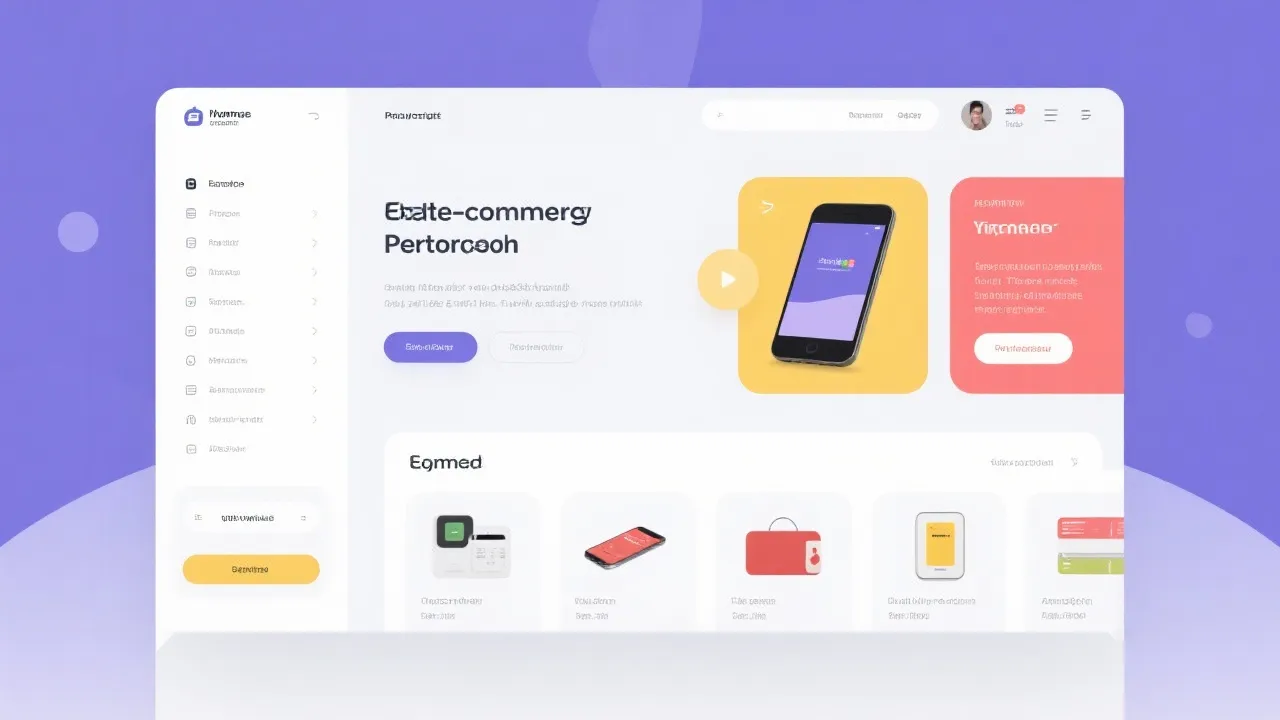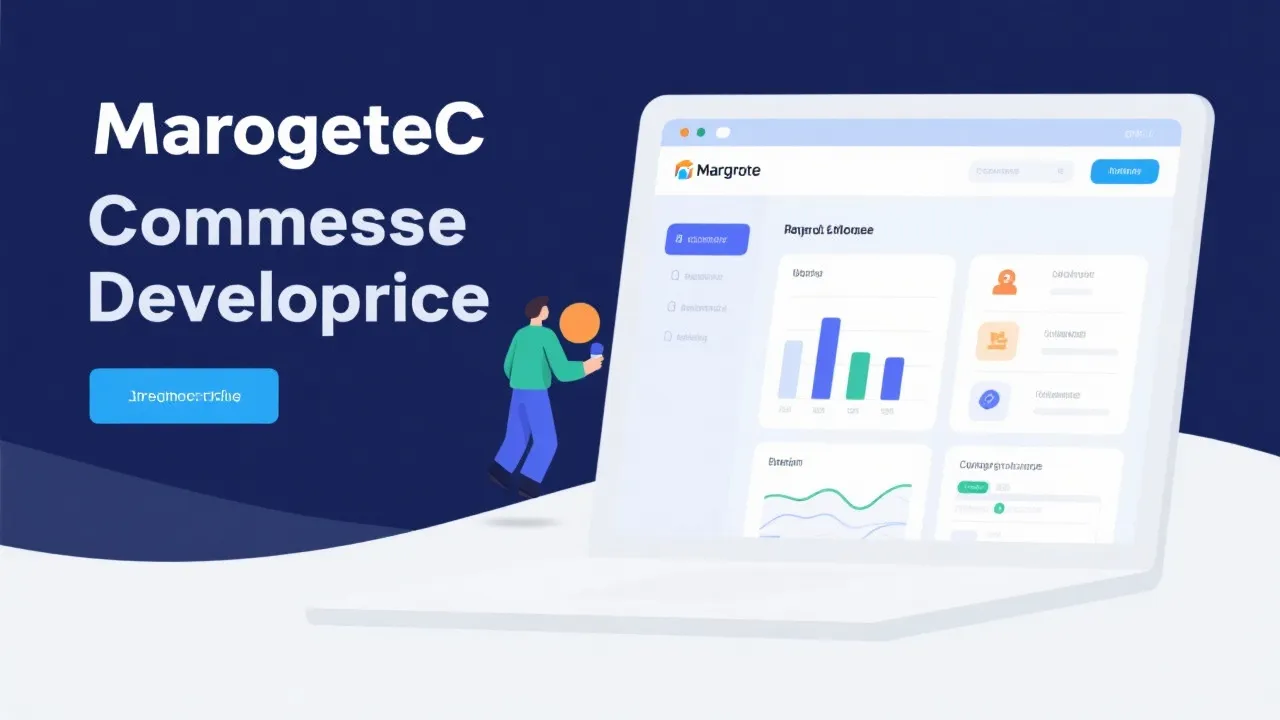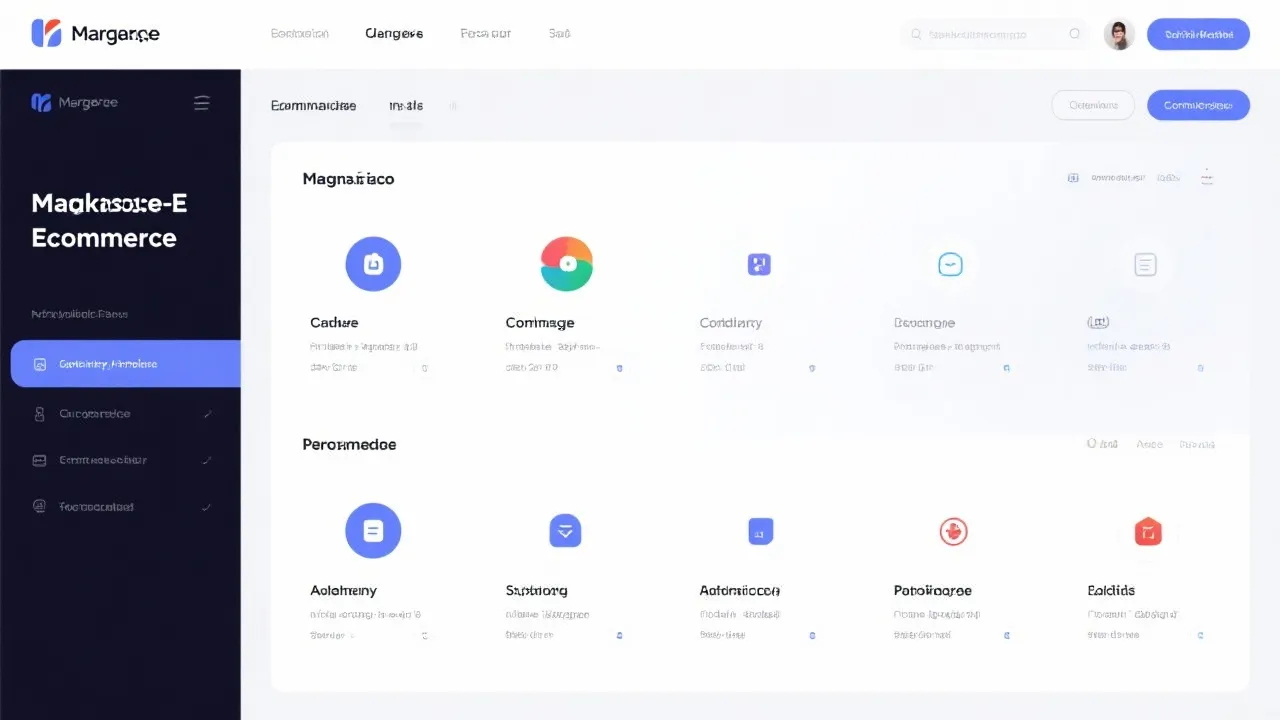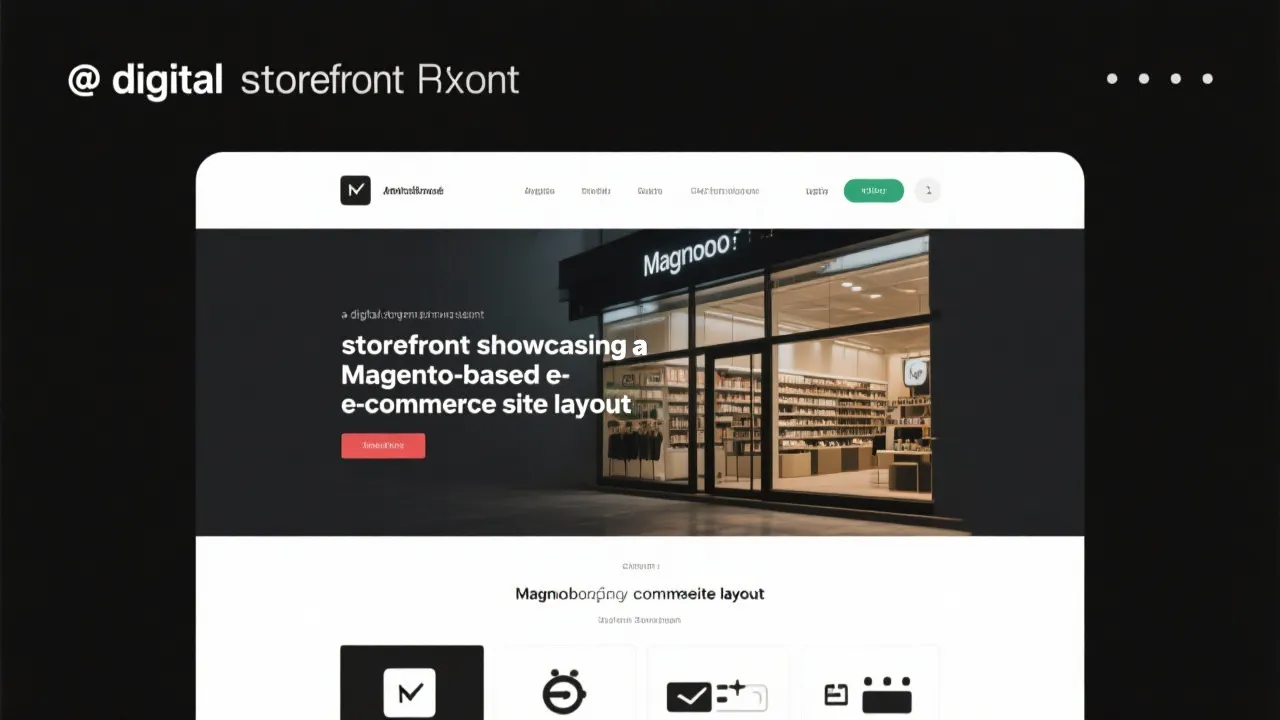Enhancing Business with Vtex and Salesforce
This article delves into the strategic utilization of Vtex and Salesforce in modern business operations. Vtex, known for its robust e-commerce ecosystem, and Salesforce, the paramount CRM platform, together offer an unparalleled synergy for digital commerce and customer relationship management, facilitating an integrated approach to enhance business efficiency and customer satisfaction.

Introduction to Vtex and Salesforce Integration
In the rapidly evolving digital marketplace, businesses continually seek edge-defining tools to maintain a competitive stance. Two industry-leading platforms, Vtex and Salesforce, have emerged as pivotal in sculpting the contemporary digital commerce landscape. Vtex offers an expansive e-commerce platform lauded for its scalable and customizable solutions tailored to a business's unique demands. Meanwhile, Salesforce stands as the epitome of customer relationship management (CRM), well-regarded for its comprehensive and integrative capabilities that foster enhanced customer interactions and data management. This powerful combination not only streamlines operations but also provides invaluable insights for businesses to innovate and thrive in a fast-paced environment.
The Confluence of E-commerce and CRM
Integrating Vtex with Salesforce creates a synergistic environment that empowers businesses with a 360-degree view of their operational dynamics. This integration offers a streamlined process where e-commerce operations directly mesh with customer relationship management efforts. Companies can leverage Vtex's powerful suite to manage products, sales, and shipments efficiently. Integrating this with Salesforce's CRM capabilities means businesses can tailor their marketing strategies based on deep customer insights, ultimately enhancing customer experience and loyalty.
The melding of e-commerce and CRM facilitates better engagement throughout the customer journey. For instance, as customers interact with the Vtex platform, their behaviors and preferences are captured and transmitted to Salesforce, enabling businesses to refine their messaging and offerings dynamically. This leads to a more personalized shopping experience, essential for modern consumers who expect companies to understand their needs and anticipate their demands.
Advantages of Combining Vtex and Salesforce
- Unified Customer Data: By bridging Vtex with Salesforce, businesses create a single source of truth for customer data, leading to better-informed decision-making. This unified view allows for greater accuracy when segmenting customers, targeting marketing campaigns, and analyzing sales trends.
- Enhanced Customer Engagement: Salesforce's data-driven insights allow for personalized engagement strategies, improving customer retention and satisfaction. The ability to tailor communications based on past purchases and preferences means businesses can enhance customer loyalty and spending.
- Operational Efficiency: The integration eliminates data silos, reduces manual entry errors, and provides real-time insights across e-commerce and CRM platforms. Automating data flow minimizes the risk of discrepancies and allows teams to focus on strategic initiatives rather than administrative tasks.
- Scalability: Both platforms are designed to grow with businesses, ensuring that operations can handle increased demand without compromising performance. As companies expand into new markets or introduce new products, the integration supports seamless updates across systems.
- Data-Driven Decisions: With integrated analytics capabilities, organizations can gauge the effectiveness of their marketing campaigns and sales strategies. Leveraging data analytics empowers businesses to make strategic adjustments quickly, fostering continuous improvement and agile responses to market changes.
Steps for Effective Integration
- Assessment and Planning: Understand your current architecture and business needs to strategize the integration. This initial phase involves mapping out goals, potential pitfalls, and gathering input from stakeholders across departments to align expectations.
- Configuration of API Components: Employ API connectors to streamline data flow between the two platforms. Developers must ensure that all essential data points are accounted for and establish secure connections that comply with data protection regulations.
- Data Mapping and Synchronization: Ensure data formats are aligned and create pathways for seamless data transfer. This step entails defining data fields that must be mapped, which could include customer information, order details, and inventory levels.
- Testing and Validation: Conduct thorough testing to ensure reliability and performance before going live. It's crucial to run a variety of test scenarios to identify potential issues that could arise once the integration is operational, including load testing to gauge performance under stress.
- Training and Adoption: Implement change management to facilitate user adoption and maximize the integration's potential. Comprehensive training sessions can help team members understand new workflows, features, and the advantages of using the integrated system.
Challenges and Solutions
While the integration of Vtex and Salesforce offers numerous benefits, businesses may encounter challenges such as data migration complexities, requiring careful mapping and testing. Additionally, ensuring alignment of business processes across platforms can be demanding. Here are some common challenges and recommended strategies to overcome them:
- Data Quality and Cleansing: Poor data quality can hinder successful integration. Businesses should conduct a thorough review of existing data to identify duplicates, inaccuracies, and outdated information to improve overall data integrity.
- User Resistance: Employees may be reluctant to adapt to new systems. Implementing a proactive user training program and providing continuous support can help ease this transition and foster acceptance.
- Technology Limitations: Not all legacy systems may be compatible with the new integration. Conducting a technology audit in advance can help identify any upgrades or changes needed to ensure compatibility.
- Ongoing Maintenance: Post-integration, businesses must monitor the systems for performance and address any emerging issues promptly. Regular audits and scheduled maintenance checks can proactively mitigate potential disruptions.
Comparison Table: Vtex vs. Salesforce Integration
| Aspect | Vtex | Salesforce |
|---|---|---|
| Core Functionality | E-commerce platform | Customer relationship management |
| Strength | Scalability and customization | Comprehensive data insights and CRM |
| Integration | APIs and connectors for CRM compatibility | Integrates with diverse e-commerce solutions |
| User Experience | Intuitive interface for online stores | User-friendly dashboards for sales tracking |
| Target Audience | Retailers and branded businesses | Businesses across all industries |
FAQs
Q: Can small businesses benefit from integrating Vtex and Salesforce?
A: Absolutely. Both platforms offer scalable solutions that can cater to businesses of all sizes, providing tailored functionalities to meet specific needs. Small businesses can particularly benefit from streamlined operations that allow them to compete with larger players in the market.
Q: What support is available during the integration process?
A: Both Vtex and Salesforce offer comprehensive support networks, including technical assistance and partner ecosystems to facilitate seamless integration. Additionally, third-party consultants experienced in both platforms can offer further insights into the best practices for ensuring a successful integration.
Q: How does integration affect existing systems?
A: The integration is designed to complement and enhance existing systems. It involves strategic planning to ensure minimal disruption while transitioning between systems. Businesses must engage in thoughtful change management to address concerns and optimize overall productivity throughout the process.
Real-World Use Cases of Vtex and Salesforce Integration
Gleaning insights from real-world applications exemplifies the tangible benefits that businesses can harness from the integration of Vtex and Salesforce. Here are a few noteworthy examples:
Case Study 1: A Global Fashion Retailer
A leading global fashion retailer sought to enhance its omnichannel strategy through the integration of Vtex and Salesforce. By unifying customer data from physical stores and online channels, the retailer achieved greater insight into consumer behavior across touchpoints. Utilizing Salesforce’s analytics, the marketing team developed customized campaigns that resonated with specific demographics, leading to a 30% increase in email engagement and a notable rise in conversion rates. Furthermore, sales teams utilized synchronized data to provide better customer service, allowing for more informed product recommendations during interactions.
Case Study 2: An Electronics Manufacturer
An electronics manufacturer with diverse product lines and extensive distribution networks faced challenges in managing its customer relationships and sales tracking. The integration of Vtex with Salesforce allowed for a more centralized platform to manage product inventories and customer orders efficiently. By leveraging automated reports and integrated forecasting tools provided by Salesforce, the manufacturer improved its operational efficiency by 40%, significantly optimizing its supply chain management and reducing excess inventory.
Case Study 3: A Beauty and Personal Care Brand
In the fiercely competitive beauty market, a popular skincare brand utilized the Vtex and Salesforce integration to refine its product launch process. By collecting and analyzing presale data across multiple channels, the marketing team was able to gauge market interest and adjust their strategies accordingly. Utilizing Salesforce’s powerful CRM features, they tracked customer engagement pre-and post-launch, resulting in a product launch that surpassed sales expectations, achieving 150% of its sales target within the first month.
Future Trends in E-commerce and CRM Integration
As technology advances and consumer expectations evolve, the integration landscape for e-commerce and CRM platforms, including Vtex and Salesforce, is set to undergo transformative changes. Here are some future trends that organizations should keep an eye on:
- Artificial Intelligence (AI) and Machine Learning (ML): The integration of AI and ML capabilities will enable businesses to leverage predictive analytics that enhance decision-making. Brands would use AI to suggest products based on browsing data and past purchases, personalizing the shopping experience further.
- Omnichannel Experiences: The demand for seamless customer experiences across multiple channels will continue to rise. Future integrations will focus on offering a holistic view of customer interactions, allowing businesses to engage customers effectively, whether online, in-store, or through mobile applications.
- Enhanced Mobile Commerce: As consumer reliance on mobile devices intensifies, integrating Vtex and Salesforce will evolve to meet mobile shopping trends. Businesses will increasingly prioritize mobile-first strategies, ensuring that mobile interfaces are fully integrated with CRM systems for streamlined customer journeys.
- Increased Focus on Customer Data Privacy: With rising concerns over data privacy, adhering to regulations like GDPR and CCPA will become paramount. Both platforms will need to enhance their security protocols, ensuring businesses can protect customer data and maintain compliance.
Conclusion
The integration of Vtex and Salesforce represents a forward-thinking approach to advancing digital commerce capabilities. By uniting these two industry giants' strengths, businesses can enjoy a competitive advantage through enhanced customer experiences and streamlined operations, marking a definitive step towards future-ready business practices. Ultimately, the collaboration between an e-commerce solution and a powerful CRM like Salesforce exemplifies how technology can be harnessed to drive growth and facilitate deeper connections with customers. By continually embracing innovations within these platforms, businesses not only meet the expectations of today’s consumers but also position themselves for sustainable success in an increasingly digital future.
-

A Guide to Cost-Efficient Small Electric Cars for Seniors
-

Mastering Debt Consolidation: Boost Your Credit Score and Manage Interest Rates
-

Your Guide to Loans, Credit Checks, and Interest Rates
-

Affordable Independent Living: Finding the Right Senior Housing
-

Guide to Senior Living Apartments: Affordable and Comfortable Environments









